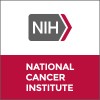
Phase I/II Study of Escalating-Dose Melphalan w/Autologous SCS & Amifostine Cytoprotect
Breast CancerLeukemia6 moreRATIONALE: Drugs used in chemotherapy use different ways to stop tumor cells from dividing so they stop growing or die. Combining chemotherapy with peripheral stem cell transplantation may allow the doctor to give higher doses of chemotherapy drugs and kill more tumor cells. Chemoprotective drugs such as amifostine may protect normal cells from the side effects of chemotherapy. PURPOSE: Phase I/II trial to study the effectiveness of high-dose melphalan plus peripheral stem cell transplantation and amifostine in treating patients with cancer.

Radiolabeled Monoclonal Antibody Therapy in Treating Patients With Primary or Metastatic Brain Tumors...
Brain and Central Nervous System TumorsMetastatic Cancer1 moreRATIONALE: Radiolabeled monoclonal antibodies can locate tumor cells and deliver radioactive tumor-killing substances to them without harming normal cells. This may be effective treatment for primary or metastatic brain tumors. PURPOSE: Phase I trial to study the effectiveness of radiolabeled monoclonal antibody therapy in treating patients with primary or metastatic brain tumors.

Therapy Based on Stage of Disease and Risk Assessment in Treating Children With Neuroblastoma
NeuroblastomaRATIONALE: Drugs used in chemotherapy use different ways to stop tumor cells from dividing so they stop growing or die. Combining chemotherapy with bone marrow transplantation may allow the doctor to give higher doses of chemotherapy drugs and kill more tumor cells. Radiation therapy uses high-energy x-rays to damage tumor cells. It is not yet known which treatment regimen is most effective in treating patients with different stages of and risk factors for neuroblastoma. PURPOSE: Phase III trial to study the effectiveness of therapy based on stage of disease and risk assessment in treating children with neuroblastoma.

Monoclonal Antibody Therapy With Sargramostim and Interleukin-2 in Treating Children With Neuroblastoma...
Disseminated NeuroblastomaRecurrent Neuroblastoma1 moreMonoclonal antibodies can locate tumor cells and either kill them or deliver tumor-killing substances to them without harming normal cells. Colony-stimulating factors such as sargramostim may increase the number of immune cells found in bone marrow or peripheral blood. Interleukin-2 may stimulate a person's white blood cells to kill cancer cells. Combining monoclonal antibody therapy with sargramostim or interleukin-2 may kill more tumor cells. Phase I trial to study the effectiveness of monoclonal antibody therapy given with sargramostim and interleukin-2 in treating children with neuroblastoma who have just completed bone marrow or peripheral stem cell transplantation

Iodobenzylguanidine Meta-I131 and Topotecan in Young Patients With Refractory or Relapsed Metastatic...
NeuroblastomaRATIONALE: Radioactive drugs, such as iodobenzylguanidine meta-I131, may carry radiation directly to tumor cells and not harm normal cells. Drugs used in chemotherapy, such as topotecan hydrochloride, work in different ways to stop the growth of tumor cells, either by killing the cells or by stopping them from dividing. A stem cell transplant may be able to replace the cells that were destroyed by iodobenzylguanidine meta-i131 and topotecan hydrochloride. PURPOSE: This phase II trial is studying the side effects of iodobenzylguanidine meta-I131 given together with topotecan hydrochloride and to see how well it works in treating young patients with refractory or relapsed metastatic neuroblastoma.

N2007-02:Bevacizumab,Cyclophosphamide,& Zoledronic Acid in Patients W/ Recurrent or Refractory High-Risk...
NeuroblastomaRATIONALE: Monoclonal antibodies, such as bevacizumab, can block tumor growth in different ways. Some block the ability of tumor cells to grow and spread. Others find tumor cells and help kill them or carry tumor-killing substances to them. Drugs used in chemotherapy, such as cyclophosphamide, work in different ways to stop the growth of tumor cells, either by killing the cells or by stopping them from dividing. Zoledronic acid may stop the growth of tumor cells in bone. Giving bevacizumab together with cyclophosphamide and zoledronic acid may kill more tumor cells. PURPOSE: This phase I trial is studying the side effects of giving bevacizumab together with cyclophosphamide and zoledronic acid in treating patients with recurrent or refractory high-risk neuroblastoma.

Safety Study of Nifurtimox for Relapsed or Refractory Neuroblastoma
NeuroblastomaThere is currently no curative treatment for children with relapsed/refractory neuroblastoma, and for these children the 5 year survival rate is <10%. As such, new therapeutic approaches are needed to treat these children. This Phase 1 clinical trial is specifically designed to test the safety and toxicity of nifurtimox when given in combination with cyclophosphamide and topotecan for the treatment of relapsed and/or refractory neuroblastoma . Prior to study opening, 3 pediatric patients with neuroblastoma have received nifurtimox in combination with this chemotherapy regimen, and all have had significant measurable responses without undue toxicity. These case reports, as well as our in vitro and in vivo investigations into the biologic effect of nifurtimox on neuroblastoma cells has prompted the development of this Phase I study. This Phase I study will involve a dose escalation trial of daily oral nifurtimox alone for one 21 day cycle of therapy, followed by continuation of nifurtimox with the addition of standard doses of cyclophosphamide (5 days) and topotecan (5 days) for 3 additional 21 day cycles. Our primary aim is to evaluate the safety of nifurtimox alone and in combination with these chemotherapy agents in multiply relapsed/refractory patients. Our secondary aim will be to evaluate the pharmacokinetics of nifurtimox as well as treatment response.

Monoclonal Antibody 3F8 and GM-CSF in Treating Young Patients With High-Risk, Refractory or Relapsed...
NeuroblastomaRATIONALE: Monoclonal antibodies, such as 3F8, can block tumor growth in different ways. Some block the ability of tumor cells to grow and spread. Others find tumor cells and help kill them or carry tumor-killing substances to them. Colony-stimulating factors, such as GM-CSF, may increase the number of immune cells found in bone marrow or peripheral blood. Giving monoclonal antibody therapy together with GM-CSF may be an effective treatment for neuroblastoma. PURPOSE: This phase I trial is studying the side effects and best dose of monoclonal antibody 3F8 when given together with GM-CSF in treating young patients with high-risk, refractory or relapsed neuroblastoma.

N2007-01: Ultratrace™ Iobenguane I 131 in Patients With Relapsed/Refractory High-Risk Neuroblastoma...
NeuroblastomaRATIONALE: Radioactive drugs, such as iodine I 131 metaiodobenzylguanidine (MIBG), may carry radiation directly to tumor cells and not harm normal cells. A bone marrow or peripheral stem cell transplant using stem cells from the patient may be able to replace blood-forming cells that were destroyed by I 131 MIBG. PURPOSE: This phase II trial is studying the side effects and best dose of iodine I 131 MIBG followed by a stem cell transplant in treating young patients with relapsed or refractory high-risk neuroblastoma.

A Phase I Trial Of The Humanized Anti-GD2 Antibody In Children And Adolescents With Neuroblastoma,...
NeuroblastomaMelanoma2 moreRelapsed and/or refractory neuroblastoma, osteosarcoma, Ewing sarcoma and melanoma are considered difficult to treat and cure. For this study we are testing the use of a new experimental (investigational) antibody called hu14.18K322A. GD2 is expressed on the surface of most of these tumor types. Two schedules of hu14.18K322A antibody will be evaluated in this study, (1) daily for four consecutive days schedule every 28 days and (2) once weekly for 4 weeks schedule every 28 days. Approximately 25-40 participants will be required to define the maximum tolerated dose for each schedule. Participants will continue on treatment for a maximum of 4 to 8 courses or until one or more of the criteria for off-treatment are met.
